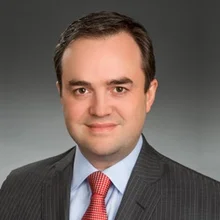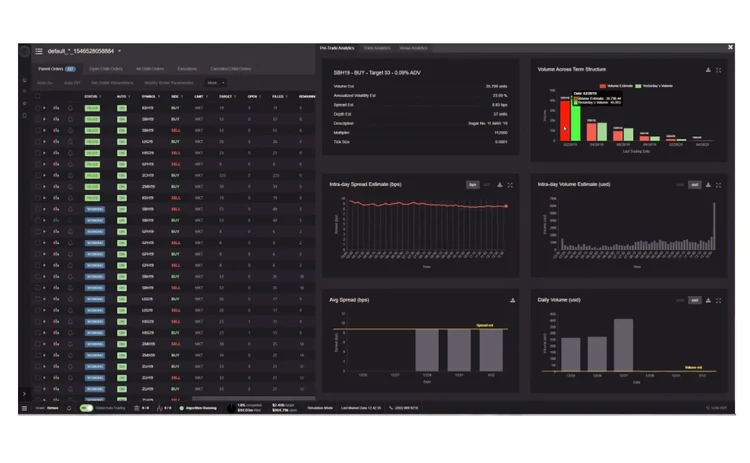
Futures trading algos ripe for disruptive new entrants
Algorithm development specialist BestEx Research is making a play to address inefficiencies in futures trading algorithms.
Automated trading algorithms are commonly used and well understood in equities markets, but their application in other asset classes, such as futures, has sometimes proved problematic. Though the use of trading algorithms in futures markets has grown over the past decade, those algorithms have not always properly addressed futures’ market microstructure, and with firms now looking for more precise execution and analysis capabilities, a new breed of futures-specific algorithms is emerging.
Additionally, while brokers have offered buy-side clients access to their routing algorithms for almost 20 years in equities markets, buy-side futures traders say broker algo offerings in the space were either non-existent or insufficient, forcing firms to build their own.
“A decade ago, if you were building a strategy … [third-party] execution algorithms for futures and currencies didn’t exist, so you had no choice but to build your own,” says Brian Hurst, a former principal and 22-year veteran of AQR Capital Management, who is now looking to build his own asset management firm. “On the futures and foreign exchange (FX) side, there are not a lot of options. From what I’ve seen, brokers just copy and paste equity algorithms over for trading futures, without understanding the market microstructure.”

Back in the day, AQR chose to create its own futures algorithms in-house, and in 2012, Hurst hired Hitesh Mittal as global head of trading to build out its execution algos and internal transaction cost analysis (TCA) capabilities. Mittal had previously spent 10 years at ITG, including as global head of algorithmic trading and liquidity management.
“At AQR, we did it ourselves. And a lot of hedge funds of similar size are also doing this themselves … but it can be expensive to build and maintain a suite of algorithms,” Mittal says. “On the one hand, equities and futures look similar—they are traded on exchanges and use similar order types—but there are some major differences … that can lead to very high costs. I was the guy complaining about this when I was on the buy side at AQR and had to build the algos myself.”
Mittal left AQR in 2015, and two years later launched BestEx Research, which specializes in providing execution algorithms directly to buy-side firms, and to banks and brokers that white-label them and offer them to buy-side clients. Having started out providing algorithms for the equities markets, BestEx is now rolling out dedicated algorithms for futures trading, which Mittal says will be cheaper than building and maintaining algorithms in-house, while providing better performance than broker offerings.
“Firms end up losing a lot of alpha in execution costs … because some offerings from brokers today are not well-rounded, and don’t take into account the idiosyncrasies of the futures markets, and don’t have measurement tools … so they end up deciding to do it themselves,” Mittal says. “We’re a technology firm that has the market microstructure knowledge. We understand trading and trading costs, and most of us have built electronic offerings on the buy side and sell side.”
That experience also extends to how BestEx has assembled the various components of its offering: The company built its underlying infrastructure from scratch, and uses Pico Quantitative Trading to manage the infrastructure. So far, BestEx has certified the algorithms with Bloomberg, Trading Technologies, InfoReach, and TradingScreen, and plans to certify them with all trading front-ends.
But key are the execution algorithms themselves, also built from scratch by BestEx. Aside from being constructed specifically with the nuances of futures markets in mind, rather than being repurposed or tweaked versions of its equity algorithms, BestEx’s new futures algorithms have discretion to speed up or slow down trading and to price and time orders, leveraging a proprietary short-term alpha model that uses a range of predictive factors to forecast upward or downward price movements likely to occur within the next few seconds.
“The biggest driver of trading cost is liquidity. So execution algorithms must take into account factors like the bid–offer spread and depth of book, and estimate what the liquidity and spread would be,” Mittal says. “In equities, that’s easy to estimate based on just a couple of weeks of data, because there’s only one Microsoft stock, for example, and it usually behaves the same. But that doesn’t apply to futures, because for each contract there are multiple expiries, and the liquidity in each expiry shifts on a daily basis … and that dynamic won’t be captured by [repurposed] equity algorithms.”

Also, because futures trade 24 hours, liquidity dynamics are different at different times of day. Mittal says BestEx’s futures algorithms account for this, avoiding times when trading would have a high market impact and result in higher costs. Other futures-specific features include assessing queue length, participation rate, volatility, and tick size—which can vary on futures markets—to maximize spread capture. The result, Mittal says, represents a saving of up to 80% on execution costs, eliminating slippage to help asset managers maximize returns.
Growing Focus on TCA
When WatersTechnology investigated the growing adoption of futures trading algorithms in 2013, only firms at the cutting edge of algorithmic development, such as Quantitative Investment Management and Quantitative Brokers, were looking closely at elements such as alpha decay or the inter-linkage between products that create the complex microstructure of futures markets, with most firms satisfied using volume- or time-weighted average price (VWAP or TWAP) benchmarks. Few had the appetite or patience for legged trades or the ability to create robust simulation environments to improve execution quality.
And while TCA is widely used in equities markets, acceptance in futures markets remains limited. David Easthope, senior analyst in Greenwich Associates’ market structure and technology practice, and author of the new report Equities TCA 2021—A Transitional Year, says that while TCA use in equities markets is recovering and evolving into “an increasingly important tool for trading desks” and “moving from a post-trade report card to an interactive trading assistant” after being thrown off course by the Covid-19 pandemic, its adoption is still much lower in other asset classes.
The Greenwich survey polled North American equities traders about their TCA usage, but also asked what other asset classes their firms use TCA for.
“The cross-utilization of TCA between equities and other asset classes is fairly low,” Easthope says. Whereas TCA is commonly used by more than 80% of firms for equities trading, only around 10% of those firms also use it to support trading in other asset classes, and of those, the leading asset classes in terms of TCA adoption are currencies and corporate bonds.
“So I don’t see a lot of TCA use for futures markets—at least, not by equities funds hedging with futures,” Easthope says. “Unless you’re deep in the weeds of futures trading, you probably don’t need it.”

This is exactly the group of futures trading professionals that are most sensitive to execution costs, and the market that BestEx is targeting: those deep in the weeds of futures, which recognize the potential of TCA to improve execution quality.
“If you’re a commodity trading advisor (CTA) with high turnover, who is trading futures all the time—as opposed to someone trading futures to hedge when they turn over their equities portfolio every six months—you’re talking about multiple basis points per trade. That easily adds up … and that can determine whether you’re in the top quartile or second quartile,” Hurst says.
Demand among this client base has grown over the past decade as institutional futures investors have become more sophisticated and as lower interest rates and returns have made firms more cost-conscious, he adds. “Ten years ago at AQR, no client ever asked about transaction cost,” Hurst adds. “By the time I left in 2019, it was a common thing for investors to ask about.”
Causes of slower TCA adoption outside equities may simply be that the US Securities and Exchange Commission’s (SEC’s) best-execution requirements don’t cover other asset classes, so there is no regulatory driver forcing adoption, or because many buy-side firms trade with a single futures commission merchant, so they don’t need to prove best execution.
But whenever adoption increases, Mittal says BestEx already offers TCA, integrated with its algorithms. “If a client sends an order to a bank, they don’t get transparency into how or why the broker executes that order. But with BestEx, we provide a dashboard showing all orders, analytics, and TCA,” he says. “As the futures markets become more electronic, people will become more conscious of transaction costs.”

Only users who have a paid subscription or are part of a corporate subscription are able to print or copy content.
To access these options, along with all other subscription benefits, please contact info@waterstechnology.com or view our subscription options here: http://subscriptions.waterstechnology.com/subscribe
You are currently unable to print this content. Please contact info@waterstechnology.com to find out more.
You are currently unable to copy this content. Please contact info@waterstechnology.com to find out more.
Copyright Infopro Digital Limited. All rights reserved.
As outlined in our terms and conditions, https://www.infopro-digital.com/terms-and-conditions/subscriptions/ (point 2.4), printing is limited to a single copy.
If you would like to purchase additional rights please email info@waterstechnology.com
Copyright Infopro Digital Limited. All rights reserved.
You may share this content using our article tools. As outlined in our terms and conditions, https://www.infopro-digital.com/terms-and-conditions/subscriptions/ (clause 2.4), an Authorised User may only make one copy of the materials for their own personal use. You must also comply with the restrictions in clause 2.5.
If you would like to purchase additional rights please email info@waterstechnology.com
More on Emerging Technologies
This Week: Startup Skyfire launches payment network for AI agents; State Street; SteelEye and more
A summary of the latest financial technology news.
Waters Wavelength Podcast: Standard Chartered’s Brian O’Neill
Brian O’Neill from Standard Chartered joins the podcast to discuss cloud strategy, costs, and resiliency.
SS&C builds data mesh to unite acquired platforms
The vendor is using GenAI and APIs as part of the ongoing project.
Chevron’s absence leaves questions for elusive AI regulation in US
The US Supreme Court’s decision to overturn the Chevron deference presents unique considerations for potential AI rules.
Reading the bones: Citi, BNY, Morgan Stanley invest in AI, alt data, & private markets
Investment arms at large US banks are taken with emerging technologies such as generative AI, alternative and unstructured data, and private markets as they look to partner with, acquire, and invest in leading startups.
Startup helps buy-side firms retain ‘control’ over analytics
ExeQution Analytics provides a structured and flexible analytics framework based on the q programming language that can be integrated with kdb+ platforms.
The IMD Wrap: With Bloomberg’s headset app, you’ll never look at data the same way again
Max recently wrote about new developments being added to Bloomberg Pro for Vision. Today he gives a more personal perspective on the new technology.
LSEG unveils Workspace Teams, other products of Microsoft deal
The exchange revealed new developments in the ongoing Workspace/Teams collaboration as it works with Big Tech to improve trader workflows.








